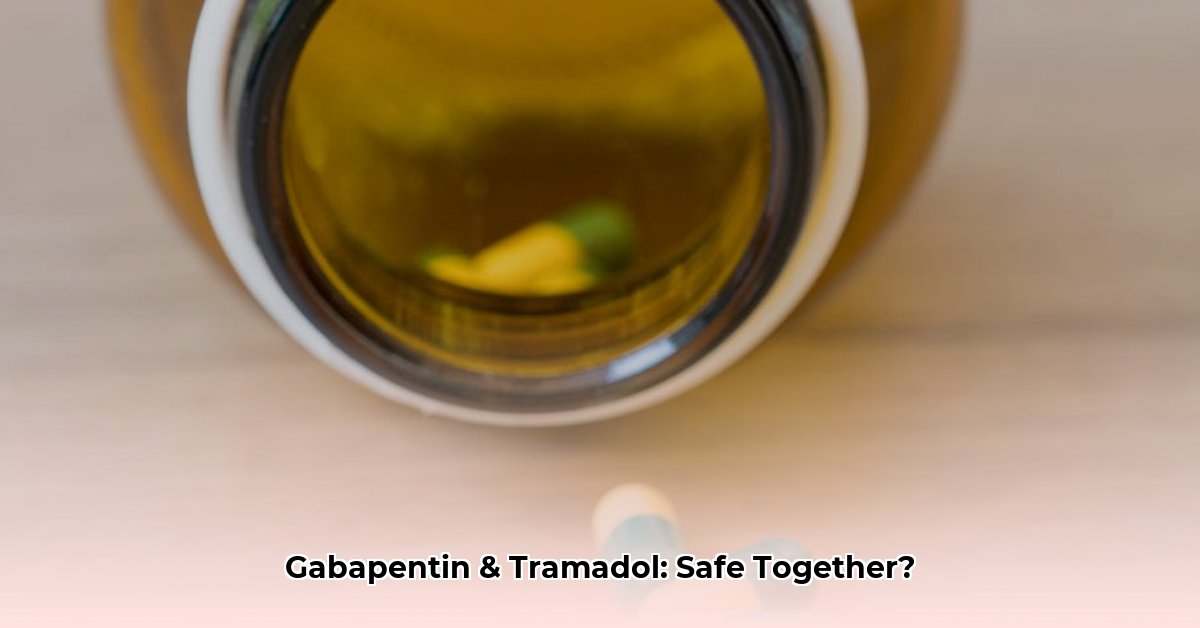Yes, gabapentin and tramadol can be taken together, but only under the direct supervision of a healthcare professional. Combining these medications can increase the risk of serious side effects, including respiratory depression, and requires careful monitoring.
Key Takeaways: Gabapentin and Tramadol
- Doctor’s Supervision Essential: Combining gabapentin and tramadol can be risky and should only be done under a doctor’s direct supervision.
- Serious Risks: Co-administration increases the risk of respiratory depression (slowed breathing), which can be life-threatening. Other risks include drowsiness, dizziness, confusion, and increased risk of overdose.
- Potential Benefits: In some cases, combining these medications may offer better pain relief than either drug alone, particularly for nerve pain. However, the risks often outweigh the benefits without careful medical management.
- Alternatives Exist: Explore alternative pain management options with your doctor, such as other medications, physical therapy, or cognitive behavioral therapy (CBT).
Understanding Gabapentin and Tramadol Interaction
Gabapentin and tramadol both affect the central nervous system (CNS). Gabapentin primarily calms overactive nerves, while tramadol alters pain perception. Combining them can amplify their CNS effects. This synergistic effect can potentially enhance pain relief but also significantly increase the risk of side effects.
Both medications can cause drowsiness and dizziness. When taken together, these effects may be intensified, making everyday tasks like driving or operating machinery dangerous. In rare cases, combining these drugs can lead to respiratory depression, a potentially life-threatening condition where breathing slows or stops.
The combined use of gabapentin and tramadol also increases the risk of overdose. Even at prescribed doses, the interaction can amplify effects, leading to symptoms such as extremely slow breathing, loss of consciousness, and cold, clammy skin. If an overdose is suspected, call 911 immediately.
Why Combining These Medications Can Be Risky
The primary concern with co-administration is the heightened risk of respiratory depression. Since both drugs can individually slow breathing, combining them significantly increases this risk, potentially leading to coma or death. The combined sedative effects also raise the risk of accidents due to impaired coordination and judgment. Furthermore, both medications carry a risk of dependence, and using them together may further increase this risk.
Potential Benefits of Combining Gabapentin and Tramadol
While risks exist, some studies suggest combining gabapentin and tramadol may provide more effective pain relief than using either drug alone, especially for certain types of neuropathic pain. This is because they work through different mechanisms, potentially offering a synergistic effect. However, any potential benefits must be carefully weighed against the risks under strict medical supervision.
FAQs: Gabapentin and Tramadol
- What should I do if I suspect an overdose? Call 911 or your local emergency number immediately. Look for signs like slow breathing, loss of consciousness, cold and clammy skin, and pinpoint pupils.
- What if I miss a dose? Take the missed dose as soon as you remember unless it’s almost time for your next dose. Do not double up on doses.
- Are there non-medication options for pain management? Yes. Physical therapy, CBT, acupuncture, massage, and mindfulness techniques can be effective. Discuss these options with your doctor.
- What are the signs of addiction or dependence? Signs include needing higher doses for the same effect, experiencing withdrawal symptoms when stopping the medication, and continuing use despite negative consequences. Consult a healthcare professional if you are concerned about addiction or dependence.
Exploring Alternative Pain Management Strategies
If gabapentin and tramadol are unsuitable, various alternatives exist:
- Other Medications: Pregabalin, duloxetine, amitriptyline, milnacipran, and cyclobenzaprine may be options, depending on the type of pain.
- Physical Therapy: Can improve physical function and reduce pain through targeted exercises and stretches.
- Cognitive Behavioral Therapy (CBT): Helps manage pain by changing thoughts and behaviors related to pain.
- Complementary Therapies: Acupuncture, massage, yoga, and mindfulness meditation can offer pain relief and improve overall well-being.
Your doctor can tailor a pain management plan based on your individual needs and circumstances. They can also monitor for side effects and adjust medications as needed.
Side Effects Comparison
| Potential Side Effect | Gabapentin | Tramadol | Combined |
|---|---|---|---|
| Drowsiness | Likely | Likely | Increased Likelihood |
| Dizziness | Likely | Likely | Increased Likelihood |
| Nausea | Possible | Likely | Possibly Increased |
| Slowed Breathing | Uncommon | Possible | Increased Likelihood |
| Constipation | Possible | Likely | Possibly Increased |
| Confusion | Possible | Possible | Increased Likelihood |
| Difficulty Concentrating | Possible | Possible | Increased Likelihood |
Disclaimer: This information is for educational purposes only and does not constitute medical advice. Always consult with a qualified healthcare professional before starting any new medication or changing your existing treatment plan.
- Wellness Fair Ideas for Work to Boost Employee Wellbeing - December 15, 2025
- Affordable Employee Wellness Fair Ideas for Any Budget - December 14, 2025
- Employee Wellness Programs Strategically Benefit Employee Health And Retention - December 13, 2025
















